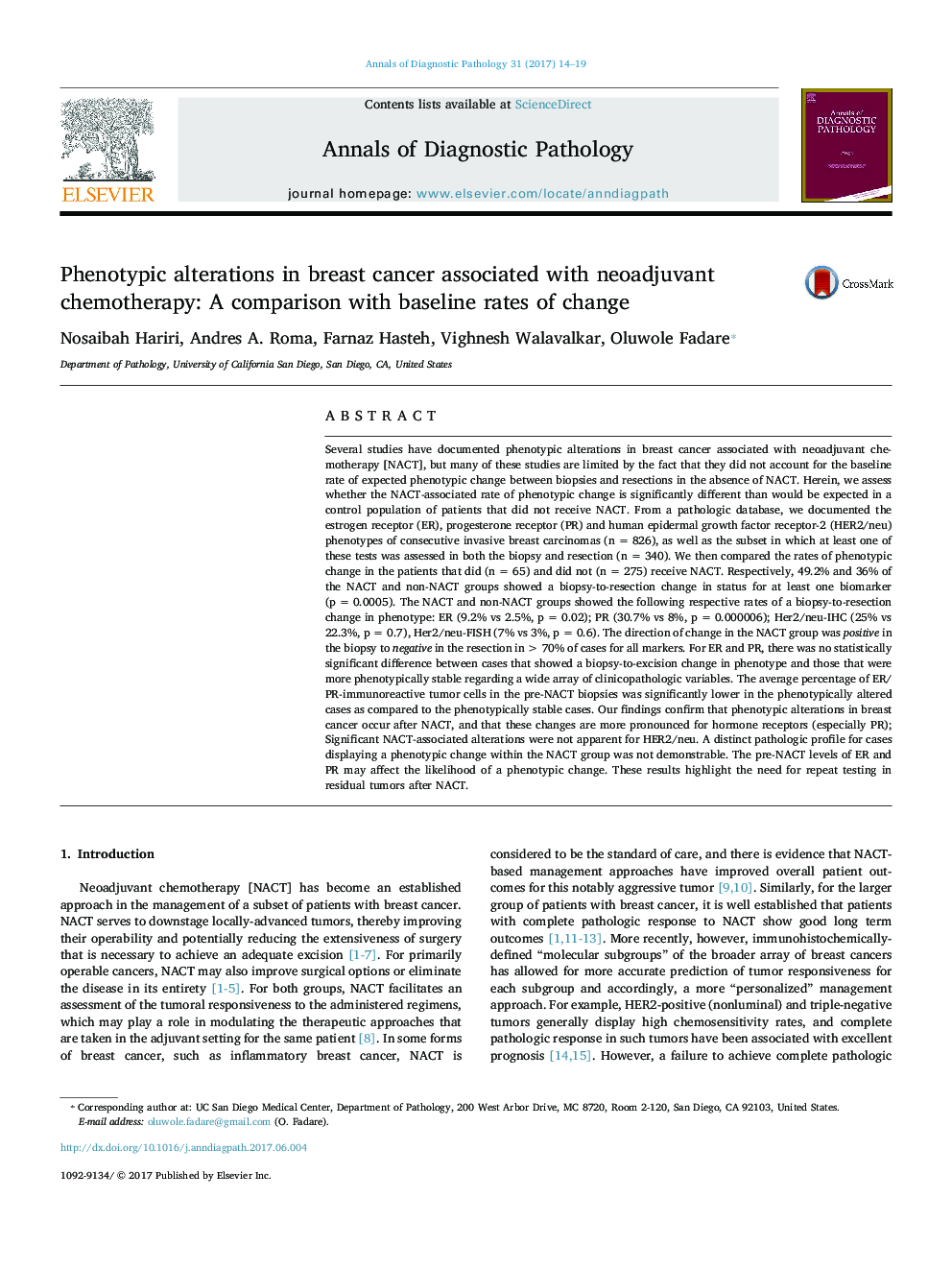| Article ID | Journal | Published Year | Pages | File Type |
|---|---|---|---|---|
| 5715860 | Annals of Diagnostic Pathology | 2017 | 6 Pages |
â¢This study compared the rate of biopsy-to-resection change in breast cancer phenotype that is associated with neoadjuvant chemotherapy to a control group.â¢Respectively, 49.2% and 36% of the study and control groups showed a biopsy-to-resection change for at least one biomarker.â¢A significant biopsy-to-resection change in phenotype was demonstrable for ER and PR, but not for HER2/neu.â¢The direction of change in the neoadjuvant chemotherapy group was from positive in the biopsy to negative in the resection in > 70% of cases for all markers.â¢Our findings highlight the need for repeat testing in residual tumors after NACT.
Several studies have documented phenotypic alterations in breast cancer associated with neoadjuvant chemotherapy [NACT], but many of these studies are limited by the fact that they did not account for the baseline rate of expected phenotypic change between biopsies and resections in the absence of NACT. Herein, we assess whether the NACT-associated rate of phenotypic change is significantly different than would be expected in a control population of patients that did not receive NACT. From a pathologic database, we documented the estrogen receptor (ER), progesterone receptor (PR) and human epidermal growth factor receptor-2 (HER2/neu) phenotypes of consecutive invasive breast carcinomas (n = 826), as well as the subset in which at least one of these tests was assessed in both the biopsy and resection (n = 340). We then compared the rates of phenotypic change in the patients that did (n = 65) and did not (n = 275) receive NACT. Respectively, 49.2% and 36% of the NACT and non-NACT groups showed a biopsy-to-resection change in status for at least one biomarker (p = 0.0005). The NACT and non-NACT groups showed the following respective rates of a biopsy-to-resection change in phenotype: ER (9.2% vs 2.5%, p = 0.02); PR (30.7% vs 8%, p = 0.000006); Her2/neu-IHC (25% vs 22.3%, p = 0.7), Her2/neu-FISH (7% vs 3%, p = 0.6). The direction of change in the NACT group was positive in the biopsy to negative in the resection in > 70% of cases for all markers. For ER and PR, there was no statistically significant difference between cases that showed a biopsy-to-excision change in phenotype and those that were more phenotypically stable regarding a wide array of clinicopathologic variables. The average percentage of ER/PR-immunoreactive tumor cells in the pre-NACT biopsies was significantly lower in the phenotypically altered cases as compared to the phenotypically stable cases. Our findings confirm that phenotypic alterations in breast cancer occur after NACT, and that these changes are more pronounced for hormone receptors (especially PR); Significant NACT-associated alterations were not apparent for HER2/neu. A distinct pathologic profile for cases displaying a phenotypic change within the NACT group was not demonstrable. The pre-NACT levels of ER and PR may affect the likelihood of a phenotypic change. These results highlight the need for repeat testing in residual tumors after NACT.
